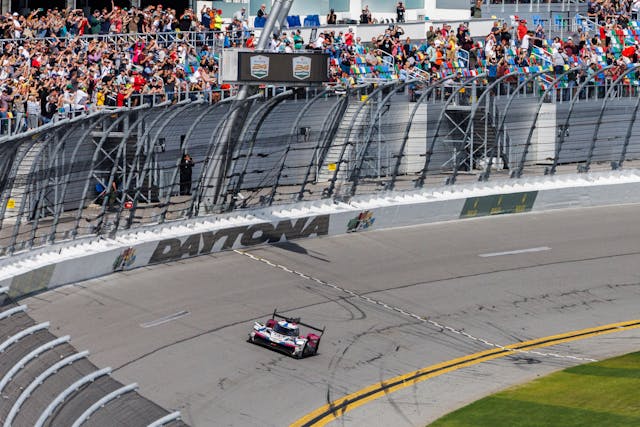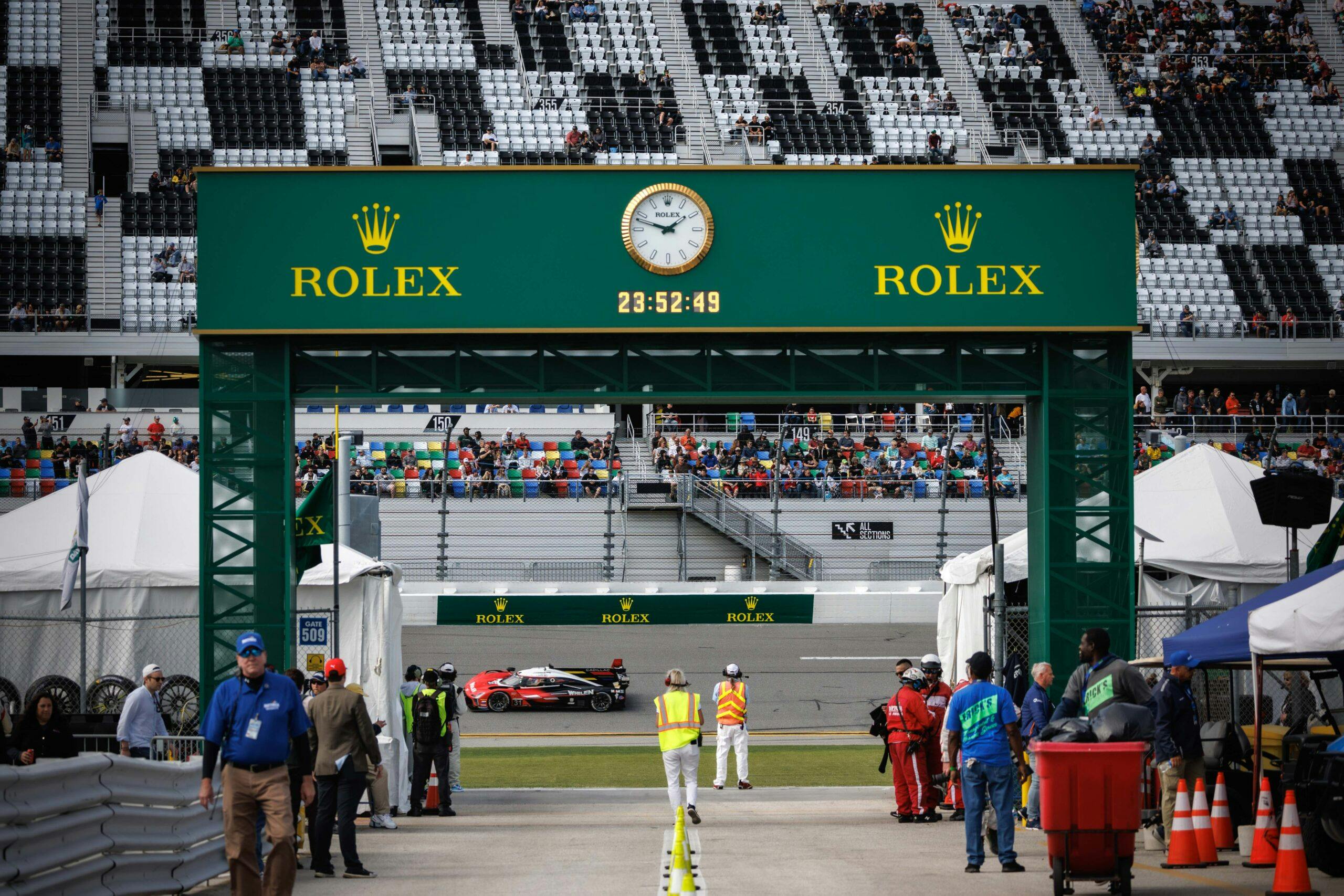Acura throttles disparate Daytona field at Rolex 24
Do you love motorsports as much as we do? Sign up for the Hagerty On Track newsletter.
Seldom has a race been so difficult, so downright impossible to handicap as last weekend’s 61st Rolex 24 at Daytona.
Unlike years past, the winds of change were strong in the IMSA preseason paddock. By the time January arrived, a brand-new class containing two new manufacturers, as well as a bevy of fresh-faced teams and drivers, joined stalwart entries for the impending Florida foray. We’re talking more variables than an Algebra textbook.
And from the proverbial control tower, it was IMSA’s job to keep the playing field level and fans enthused.

This balancing issue stems from professional road racing’s new set of common rules agreed upon by IMSA in the United States, and the ACO in France. This year’s legislations and balance of performance (BOP) regulations allow a myriad of new marques to compete at professional road racing’s highest level with the same car. Now, for the first time in decades, a manufacturer could sweep the discipline’s triple crown by winning first overall at the Daytona, Sebring, and Le Mans in France.

This all-new class of Grand Touring Prototypes (GTP) features hybrid-powered fiberglass-shrouded race cars that don’t resemble any sort of road-goer. Last weekend, sleek new designs from Acura, Cadillac, BMW, and Porsche made their competition debut on the Daytona high banks. The group engaged in a fierce battle for 24 hours, with the overall win eventually going to the veteran Meyer Shank Racing Acura team.
With a race under their belt, the fresh field continues on to the Mobil 1 Twelve Hours of Sebring and—most importantly—the 100th anniversary 24 Hours of Le Mans.

Back to the handicap: There was an underlying concern that the new GTP cars (called LMDh in Europe) might not survive the 24 hours, especially given the sophisticated, mandatory new battery-powered systems that require the cars to enter and exit the pits on electricity alone. There was an unspoken fear that one of the fast, proven LMP2 undercards might sneak in for an overall win. IMSA quietly addressed this issue, slowing the LMP2s down by reducing power and increasing weight.
There was no need.
Acura finishes 1-2 in GTP

The GTP cars performed, as a whole, admirably. For the second year in a row, the pink Meyer Shank Racing Acura placed first overall. Its driver lineup was comprised of closer Tom Blomqvist, Colin Braun, Simon Pagenaud and Helio Castroneves, who collected his third straight Rolex triumph. The future hall-of-famer could open his own jewelry store as he now owns three Rolex watches and four Indianapolis 500 rings.
The little Acura twin-turbo V-6 ran flawlessly, but there was concern in the pits about the transmission, which began to overheat eight hours into the enduro. They decided to run it until it stopped shifting, which it never did. Otherwise, the Meyer Shank Acura just suffered the expected niggling problems.
The lead Acura, as well as the second-place car, the Wayne Taylor Racing with Andretti Autosport Acura, completed 783 laps on the 3.56-mile track. Third place and fourth place, the two Cadillacs fielded by Chip Ganassi, also finished on the same lap. In fact, the fourth-place car was only 16 seconds behind the winning Acura.
The Whelen Cadillac was 12 laps back, and the top-finishing BMW, a Rahal-Letterman-Lanigan car, was 15 laps behind. Then, in seventh, was the first LMP2 car, the Proton entry. That car was about four seconds a lap slower than the top Acura GTP car.
The failure of Roger Penske’s Porsche GTPs to finish near the top was the biggest surprise. The two Porsches had more development time and certainly as much testing time as the other marques, but the best they could do was 14th and 42nd overall. If a pre-race pick had to be made, we’d likely have selected the Porsches.
The ninth GTP car, the second of RLL’s BMWs, was never in the game and finished a grim 48th in the 61-car field.
WeatherTech Racing tops GTD Pro

Aside from the Meyer-Shank win, the other feel-good story was the GTD Pro win by WeatherTech Racing’s Mercedes-AMG, led by Cooper MacNeil, in his final race as an IMSA WeatherTech SportsCar Championship competitor. The team finished 17th overall, giving MacNeil a Rolex on his way out of the driver’s seat to work in team management and to help with the family-owned WeatherTech company. Corvette Racing was second in class after leading much of the race, just four seconds behind the WeatherTech Mercedes.
The AWA team won in LMP3, and in GTD, the Heart of Racing Aston Martin GT3 took the class win.
Next up: Sebring

All said, though, the major marvel of the race was the Meyer Shank Acura, which was able to better launch off the corners than the competition. All race long, the pole-sitting Acura seemed to be able to pass the competition at will. The rest of the GTP field has some work to do before March 18, when the 12 Hours of Sebring takes the green flag.
Meyer Shank, on the other hand, looks to take another step toward the triple crown.





















Acrua won but throttles is a bit much. Cadillac was right there and that was after both cars took major damage. It will be interesting to see how the season goes.
Also did the Acura teams sand bag till the end as they were not always that fast.
“In fact, the fourth-place car was only 16 seconds behind the winning Acura.”
WHAT??? After 24-hrs of racing the spread on the first four cars is 16 seconds – why is this sentence not all in CAPS, bold, red 38-font print??? That is a surreal finish – reliability, consistency, etc., etc., off-scale. Am i the only one so easily impressed in this cadre?